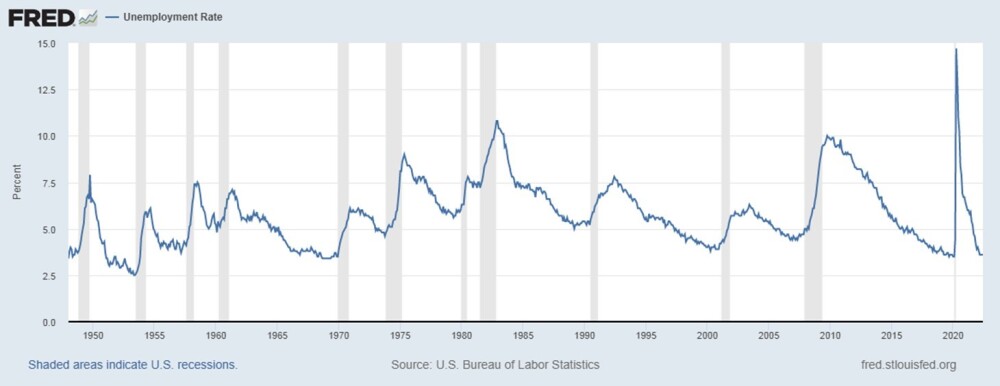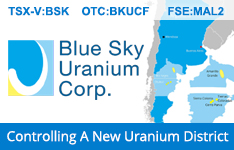With the Federal Reserve seemingly determined to continue tightening, per FedHead Jerome Powell’s keynote Jackson Hole speech, asset prices, including stocks and gold, have declined sharply. Other major global central banks, at least in Europe and Britain, have indicated that they intend to pursue the same path.
The central questions remain: when will the economy fall into a recession that cannot be denied, and what (if anything) will cause the Fed and other banks to stop?
For markets: are stocks in a bear market? And when will gold turn?
Balance Sheet Reduction Should Now Be Underway
Powell, in his brief eight-minute speech, emphasized that the Fed would continue to pursue its policies until inflation was at its target 2% level, but although he made reference to interest rates several times, he did not mention the reduction in the size of its bloated balance sheet.
This omission was surprising since, under the Fed’s own plans, this month, it is supposed to start reducing the balance sheet by $95 billion a month, and this would include selling Treasuries and mortgage-backed securities, in addition to allowing them to roll off. Given the timing, one would have thought that this merited a mention.
The Fed is already dramatically behind schedule; as of mid-August, it had achieved less than one-third of its target reduction since June. If they start to reduce the balance sheet by their stated amounts, that will have a drastic effect on the economy, more significant than recent rate hikes.
And remember, as we have said before, that relative to where rates started and the size of the balance sheet, what we have seen so far, or even what is planned for the next year, can hardly be described as hawkish.
Already, the Economy Is Feeling the Pinch
The Fed has begun shifting its outlook on the economy. Barely a few weeks ago, the Fed was asserting that they could engineer a soft landing, bringing inflation down to 2% while avoiding a recession.
They were firm that there was no recession. In recent weeks, we have begun to hear that there will be some pain, and there is some risk of a minor recession.
Watch how the language will change in the weeks ahead, just as it did over the housing crisis in 2008 and inflation over the past year. A range of indicators, particularly forward-looking indicators, from manufacturing to housing, show that the economy is slowing.
There is variation from one week or month to the next, but the trend is clear. The Fed (and Administration), however, assert that the U.S. economy is strong because the labor market is so strong, pointing to the low unemployment rate.
Is the Low Unemployment Rate a Sign of a Strong Economy?
Yes, the unemployment rate is low though it ticked up in Friday’s report — but it is always at its low immediately before a recession starts. See graph; acknowledgment to Peter Boockvar for bringing this to our attention. Listening to corporate earnings calls shows that a broad range of major corporations is either instituting a hiring freeze or planning layoffs.

And Interestingly, the government has once again revised downwards the number of new jobs created for previous months; the initial “beat” gets all the attention, while the negative revision is lost in the noise about the latest number.
What Does This Mean for the Markets?
The U.S. stock market has given back most of its gains from the recent rally that saw the S&P up 17%. This is true for global markets as well.
The question now is whether the major global markets are in a longer bear market or whether, after retracing most of the rally, markets will find a near-term bottom. I am in the former camp: valuations remain very high, and the corporate earnings outlook is deteriorating with the economy.
A stagflationary economic environment is not the best for developed market equities. The initial rally in a bear market is typically the strongest, and that is now behind us.
So we would still be looking for opportunities to reduce exposure to major global markets and wait before buying other than very selectively. More worryingly, subsequent legs down for bear markets are deeper than the first, with the last third of a bear market on average twice as severe as the first third, so there could be more market pain ahead.
As mentioned previously, smaller markets typically outperform in a stagflationary environment, but equally, they tend to perform better as a group when the dollar is falling, and that is not the case now. We will look more among smaller markets — government finances are often better, and certainly equity valuations are lower with better earnings outlooks — but again won’t be too aggressive until the dollar weakens.
The dollar also has acted as a significant anchor on the gold price. The dollar price of gold is down just over 6% this year, while the dollar is up almost 15%, so gold has held up reasonably well, far better than the broad stock market in the U.S. or globally.
The gold stocks, however, have been a different story, falling with the broad market earlier in the year but not participating in the recent rally; the XAU is down 25% this year.
When Will Gold — and Gold Stocks — Turn?
What will change the gold stocks is mostly a sustained higher price for gold, along with a couple of quarters of strong performance. Certainly, the companies generally are in good shape with net cash, strong margins, and excessively low equity valuations.
What will change the gold price is one of two things: a declining dollar or a growing recognition that the Federal Reserve cannot achieve its inflation target without provoking a serious recession and that, at some point, it will halt its tightening.
As for the dollar, if the European Central Bank carries through on its threat to raise rates by perhaps 75 basis points later this month, the euro could strengthen. Though the dollar would retain its yield advantage, a change in direction and the rate of change is more important for markets.
On the second issue, we have been consistent in our belief that this Fed would sustain tightening longer than in 2018 or previous cases where it pivoted at the first hiccup in the markets, if only because inflation is higher now than in the past.
Nonetheless, the Fed will be unable to bring the inflation rate down to its target 2% level without pushing the economy into a serious recession. I do not think the Fed will stay the course.
Personalities Matter
For one thing, debt levels are as much as four times as high as when Volcker tamed inflation; debt-to-GDP is 122% today versus 31% in 1979. That means that higher rates will have a far more significant impact on the economy, including government debt-servicing.
In addition, though President Biden gave Powell his marching orders to tame inflation a few months back, will he still support Powell’s policy when the economy deteriorates, and unemployment becomes an issue? President Reagan had Volcker’s back in 1980.
And lastly, while Powell clearly does not want to go into the history books as another Arthur Burns, who failed to control inflation, nor, I suspect, does he want to be known as the Fed chairman who provoked the greatest recession since the 1930s.
So at some point, the Fed will pause — they don’t have to immediately pivot into more QE (and certainly will try to avoid calling it that) — and that will cause gold to move up strongly.
Gold, and even more so the gold equities, are pretty washed out; even the physical gold ETFs are trading at discounts, a sign of negative sentiment. This means that the rallies, when they come, will be all that much more powerful.
Barrick Strengthens Its Balance Sheet With Royalty Sales
Barrick Gold Corp. (ABX:TSX; GOLD:NYSE) has sold two collections of royalties, the larger, for $60 million, to Maxerix, with $10 million contingent on certain milestones. The second portfolio is being sold by Barrick’s joint venture with Newmont, Nevada Gold Mines, for $27 million, to Gold Royalty. The royalties are on a project not owned by Barrick.
The transaction is slightly accretive to Barrick’s NAV, but by bolstering its cash balance, increases the certainty of its dividend being paid. Barrick, the world’s second-largest gold miner (after Newmont), is very undervalued here: net cash positive with a yield of 5.4%, and trading at virtually its lowest price-to-free cash flow in the last 20 years despite profit margin in the upper half of its long-term average. At this price, Barrick is a very strong Buy.
Increased Revenue for Orogen
Orogen Royalties Inc. (OGN:TSX.V)generated almost CA$1 million in revenue in the second quarter, with $942,325 from its Ermitaño royalty. Mine operator First Majestic is planning for increased production from Ermitaño in the second half of the year, with Orogen estimating $1.8 million in revenue in the second half, based on a gold price of $1,750, up from a little less than $1.7 million in the first half.
The company has over $10 million in working capital, including $3 million in cash and no debt. It continues to be active in acquiring properties for royalty generation, staking a project in Durango, Mexico. Orogen is a Buy.
Kingsmen’s Recovery Under Way
Kingsmen Creatives Ltd. (KMEN:SI) continues its post-pandemic recovery, reporting a smaller loss in the first half of the year versus the same period last, with the loss down 22% on higher revenue. Encouragingly, the core business remains “robust” while there is a strong pipeline of projects, despite ongoing lockdowns and restrictions in the east Asian region.
Controlling costs is a key priority. Kingsmen is well-positioned for the novel and experiential projects that many companies want to attract customers coming out of the lockdowns, and the company is well leveraged to a recovery. We will look to buy on pullbacks.
MOST OF THE STOCKS on our list are at good buying levels now, particularly the gold and resource stocks.
Best Buys now, in addition to those above, include Osisko Gold (OR.NY, 9.72); Franco-Nevada (FNVNY, 121.59); Wheaton Precious (WPM.NY, 31.15); Royal Gold (RGLD, Nasdaq, 90.43); Agnico Eagle (AEM.NY, 41.56); Fortuna Silver (FSM.NY, 2.28); Pan American (PAAS, Nasdaq, 14.94); and Hutchison Port Holdings (HPHT, Singapore, US$0.205).
Want to be the first to know about interesting Gold investment ideas? Sign up to receive the FREE Streetwise Reports' newsletter.
Subscribe
Adrian Day Disclosures:
Adrian Day’s Global Analyst is distributed for $990 per year by Investment Consultants International, Ltd., P.O. Box 6644, Annapolis, MD 21401. (410) 224-8885. www.AdrianDayGlobalAnalyst.com. Publisher: Adrian Day. Owner: Investment Consultants International, Ltd. Staff may have positions in securities discussed herein. Adrian Day is also President of Global Strategic Management (GSM), a registered investment advisor, and a separate company from this service. In his capacity as GSM president, Adrian Day may be buying or selling for clients securities recommended herein concurrently, before or after recommendations herein, and may be acting for clients in a manner contrary to recommendations herein. This is not a solicitation for GSM. Views herein are the editor’s opinion and not fact. All information is believed to be correct, but its accuracy cannot be guaranteed. The owner and editor are not responsible for errors and omissions. © 2022. Adrian Day’s Global Analyst. Information and advice herein are intended purely for the subscriber’s own account. Under no circumstances may any part of a Global Analyst e-mail be copied or distributed without prior written permission of the editor. Given the nature of this service, we will pursue any violations aggressively.
Disclosures:
1) Adrian Day: I, or members of my immediate household or family, own securities of the following companies mentioned in this article: All. I personally am, or members of my immediate household or family are, paid by the following companies mentioned in this article: None. My company has a financial relationship with the following companies mentioned in this article: None. Funds controlled by Adrian Day Asset Management, which is unaffiliated with Adrian Day’s newsletter, hold shares of the following companies mentioned in this article: All. I determined which companies would be included in this article based on my research and understanding of the sector.
2) The following companies mentioned in this article are billboard sponsors of Streetwise Reports: None. Click here for important disclosures about sponsor fees. The information provided above is for informational purposes only and is not a recommendation to buy or sell any security.
3) Statements and opinions expressed are the opinions of the author and not of Streetwise Reports or its officers. The author is wholly responsible for the validity of the statements. The author was not paid by Streetwise Reports for this article. Streetwise Reports was not paid by the author to publish or syndicate this article. Streetwise Reports requires contributing authors to disclose any shareholdings in, or economic relationships with, companies that they write about. Streetwise Reports relies upon the authors to accurately provide this information and Streetwise Reports has no means of verifying its accuracy.
4) This article does not constitute investment advice. Each reader is encouraged to consult with his or her individual financial professional and any action a reader takes as a result of information presented here is his or her own responsibility. By opening this page, each reader accepts and agrees to Streetwise Reports' terms of use and full legal disclaimer. This article is not a solicitation for investment. Streetwise Reports does not render general or specific investment advice and the information on Streetwise Reports should not be considered a recommendation to buy or sell any security. Streetwise Reports does not endorse or recommend the business, products, services, or securities of any company mentioned on Streetwise Reports.
5) From time to time, Streetwise Reports LLC and its directors, officers, employees, or members of their families, as well as persons interviewed for articles and interviews on the site, may have a long or short position in the securities mentioned. Directors, officers, employees, or members of their immediate families are prohibited from making purchases and/or sales of those securities in the open market or otherwise from the time of the decision to publish an article until three business days after the publication of the article. The foregoing prohibition does not apply to articles that in substance only restate previously published company release.
















































